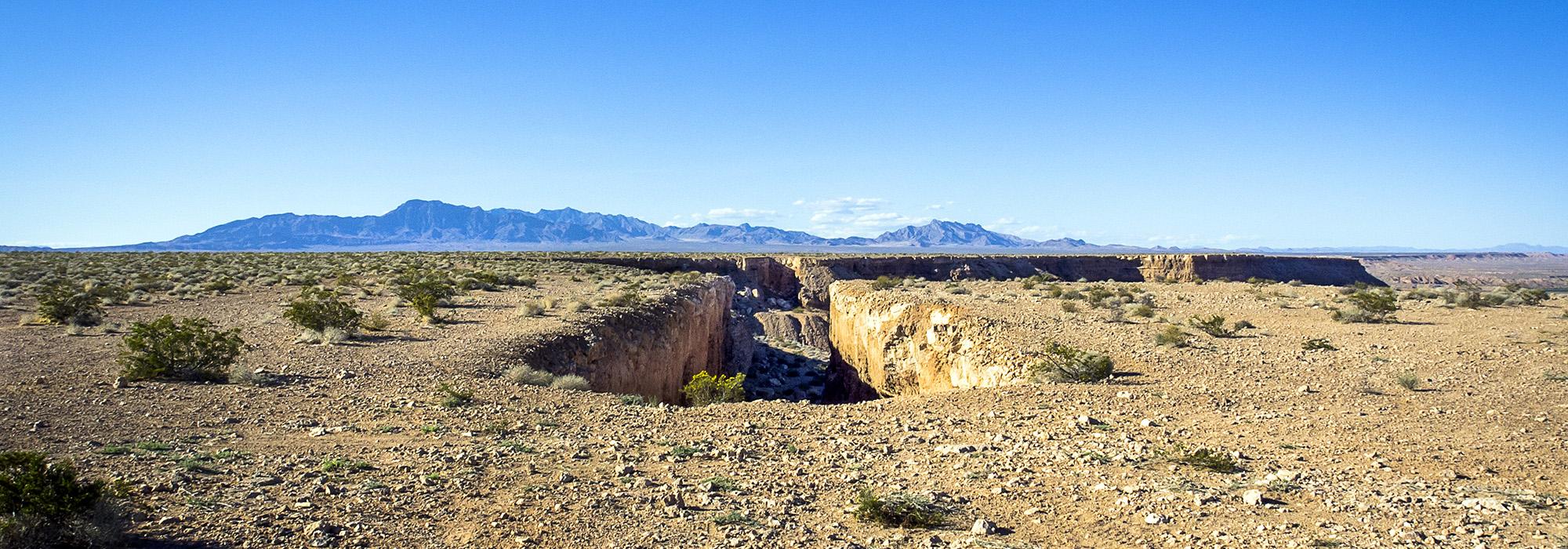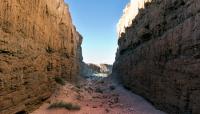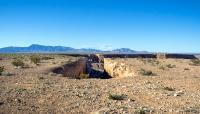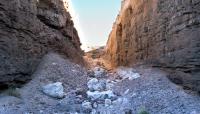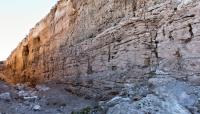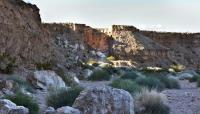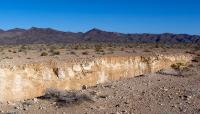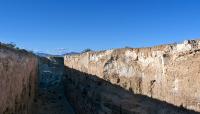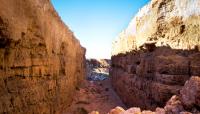Located on 60 acres amidst wide valleys and mesas in the Moapa Valley, approximately 65 miles northeast of Las Vegas, artist Michael Heizer conceived of this “negative sculpture” in 1969 and completed it a year later. Funded by art patron Virginia Dwan and excavated by local real estate developer and heavy equipment operator Bryant Robison, the installation consists of two parallel trenches dug at an almost exact north-south trajectory on a cross-axis to the natural escarpment. Using dynamite and a bulldozer to remove 240,000 tons of sandstone and rhyolite, thus exposing the site’s sedimentary geology, Heizer created a linear void 50 feet deep, 30 feet wide, and 1,500 feet long. Functioning to both separate and unite Heizer’s sculpture, a naturally occurring chasm measuring approximately 900 feet across stretches between the two trenches. The northern cut measures approximately 220 feet in length while the southern cut measures 320 feet. Debris from the trenches deposited into the chasm visually extends the axis across the expanse. The ends of the steeply sided trenches slope 45 degrees to the desert floor. Taken together, the opposing rectilinear trenches create a visible void, which, in counterpoint to the irregular mesa edge and natural valley, is distinctly sculptural. Among the earliest installations in the “land art” movement, Double Negative set the precedent for a wide range of diverse works that would follow. In 1984, Dwan gifted the piece to the Museum of Contemporary Art Los Angeles (MoCA) with the condition, imposed by the artist, that MoCA allow nature to reclaim the land through weather and erosion. The remote site is accessible via a network of rough, unpaved roads.



